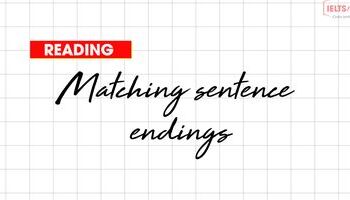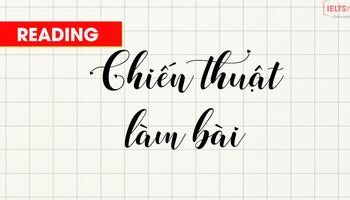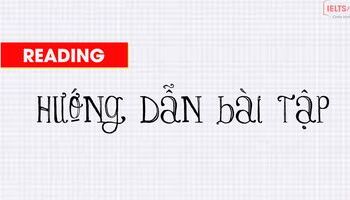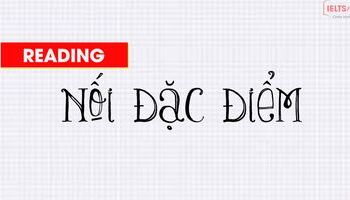Matching sentence endings là một dạng bài các bạn cần chú ý trong IELTS Reading nhé. Hãy cùng tìm hiểu và ôn luyện dạng bài này nha.
1. Matching sentence endings là gì?
Đây là dạng bài tương đối không khó trong bài thi Reading, bạn sẽ có 1 list câu “dở dang”, và 1 list câu “kết thúc”. Nhiệm vụ của bạn là tìm những cái “đuôi” cho list câu dở dang ở trên.
Thường các bạn sẽ cố gắng tìm những điểm ngữ pháp phù hợp để loại trừ cho dễ. Ví dụ như “The idea of zero net soil degradation” thì bạn sẽ tìm “endings” bắt đầu bằng động từ có “s” hay “không s” để phù hợp với “The idea”, nhưng IELTS không dễ như thế đâu bạn, thường ngữ pháp sẽ rất khéo, match với tất cả các câu đều được, hoặc dùng động từ khiếm khuyết như trường hợp 1 loạt “may” ở đầu câu nhưng hình bên dưới.
Nên cách tốt nhất để làm dạng này là đọc hiểu, tìm đúng vị trí trong bài đọc và match nhé! Lát nữa bên dưới sẽ nói sâu hơn nhé, nhìn sơ qua để nhận biết dạng bài nè: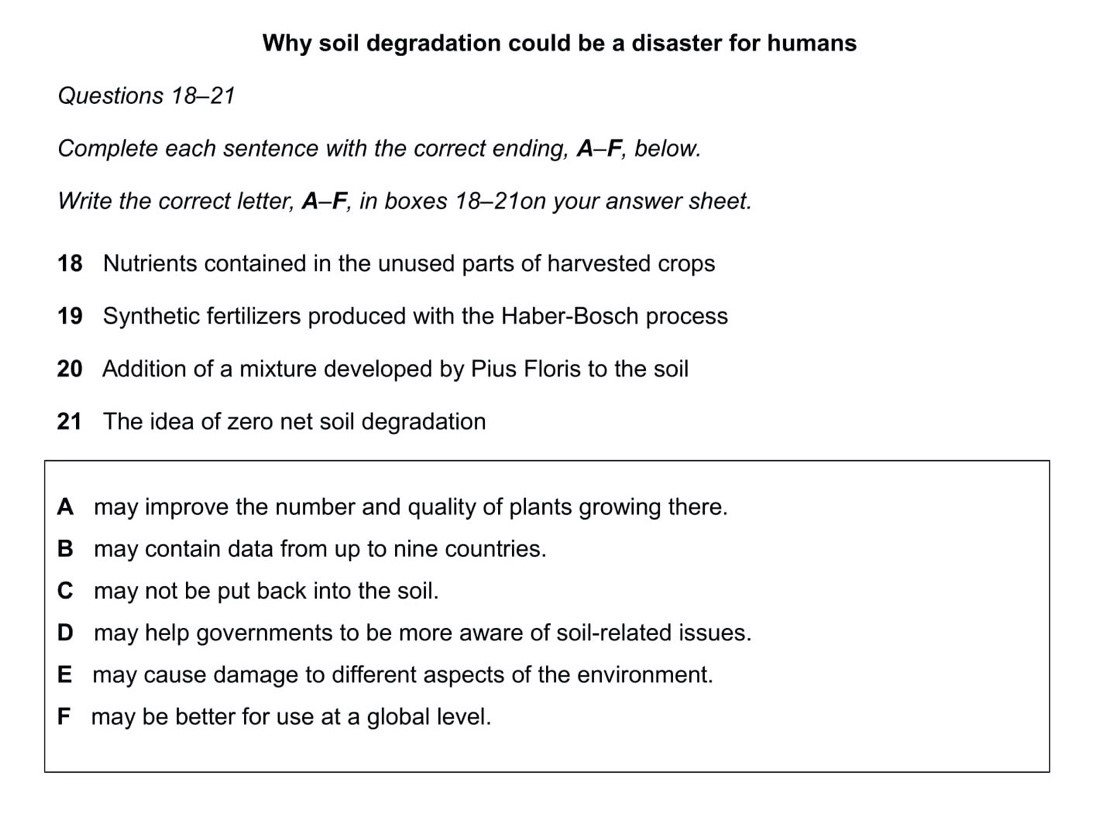
Minh hoạ dạng bài Matching Sentence Endings
2. Cách làm bài
Bước 1: Đọc lướt và dự đoán câu trả lời
Thường mình sẽ đọc sơ qua 1 lượt để xem những câu nào có nội dung THẬT SỰ KHÁC BIỆT, không thể match với nhau thành 1 câu được. Vế trước và vế sau riêng biệt, không liên quan 1 chút gì đến nhau, nhìn vào 1 cái là biết, dạng dạng vậy á. Thì mình loại trừ luôn.
Nhưng thực tế thì không quá dễ dàng để loại trừ được ngay từ lần đọc đầu tiên. Thường việc này dùng để loại trừ khi mình đang phân vân 2-3 đáp án trong quá trình làm bài.
Ví dụ:
All the fairy tales analysed by Tehrani
A. were originally spoken rather than written.
B. are the reason for their survival.
Nếu như đang phân vân giữa 2 câu này thì mình có thể loại trừ câu B vì nếu chọn A sẽ là “Những câu chuyện cổ tích được phân tích bởi Tehrani ban đầu được kể bằng lời nói chứ không phải chữ viết.”
Chọn B sẽ là “Những câu chuyện cổ tích được phân tích bởi Tehrani là những lý do cho sự sống còn của họ/của chúng”
Bước 2: Gạch chân keywords quan trọng
Gạch chân những từ khóa làm nổi bật lên câu văn hoặc những từ khóa giúp dễ dàng cho việc tìm kiếm trong bài đọc. Ví dụ
27. Tehrani rejects the idea that the useful lessons for life in fairy tales
-> Chú ý “reject” (từ chối chứ không ủng hộ)
Chú ý: Useful lessons
28. Insights to the development of fairy tales
-> Chú ý: insight, development
Endings:
A. were originally spoken rather than written.
-> Chú ý spoken, rather than (so sánh), written
B. have been developed without factual basis.
-> Chú ý: without (mà không có), factual basis
Bước 3: Check đáp án
Sau khi match xong, nên đọc lại một lượt. Đây là dạng bài sẽ sắp xếp theo thứ tự bài đọc nên sẽ dễ check hơn.
Đọc một lượt cảm thấy thông tin hợp lý với bài đọc thì chúng ta có thể yên tâm về câu trả lời của mình. Còn thấy hơi sai sai thì nên xem lại vì có thể đã nối nhầm endings của câu khác, lúc này maybe là phải check lại 2 câu chứ không phải 1 câu đâu nhé :v sai dây chuyền đó
3. Luyện tập
Jurassic crocodile discovery sheds light on reptiles' family tree
A. A newly identified species of 150 million-year-old marine crocodile has given insights into how a group of ancient animals evolved.
The ancestor of today's crocodiles belonged to a group of animals that developed a tail fin and paddle-like limbs for life in the sea, resembling dolphins more than crocodiles. These slender animals, which fed on fast-moving prey such as squid and small fish, lived during the Jurassic era in shallow seas and lagoons in what is now Germany. Related species have previously been found in Mexico and Argentina.
B. An international team of scientists, including researchers from Germany and the University of Edinburgh, identified the new species from a remarkably well-preserved skeleton. The fossil was discovered in 2014 in a quarry near the town of Bamberg in Bavaria, Germany by a team from the Naturkunde-Museum Bamberg, where it is now housed. The species, Cricosaurus bambergensis, takes its name from the town.
C. Researchers compared the fossil with those from other museum collections, and confirmed that it was a previously unseen species. The skeleton has several distinguishing features in its jaws, the roof of its mouth and tail, some of which have not been seen in any other species.
Experts created digital images of the fossil in high resolution, to enable further research. They expect the fossil will aid greater understanding of a wider family of ancient animals, known as metriorhynchid, to which this species belonged.
D. Dr Mark Young, of the University of Edinburgh's School of GeoSciences, who took part in the study, said: "The rock formations of southern Germany continue to give us fresh insights into the age of dinosaurs. These rock layers were deposited at a time when Europe was covered by a shallow sea, with countries such as Germany and the UK being a collection of islands."
E. Sven Sachs, from the Naturkunde-Museum Bielefeld, who led the project, said: "The study reveals peculiar features at the palate that have not been described in any fossil crocodile so far. There are two depressions which are separated by a pronounced bar. It is not clear what these depressions were good for."
===========
Questions 1–4
Complete each sentence with the correct ending, A–G, below.
Write the correct letter, A–G, in boxes 1–4 on your answer sheet.
1. The ancient species of crocodile ate marine creatures that
2. The skeleton is kept in
3. Bones of the early type of crocodile
4. The geology of southern Germany
A. is believed to have lived 150 million years ago.
B. show some unique features.
C. resembled dolphins.
D. was laid down when the area was under water.
E. a museum in the town near where it was found.
F. swam fast through the water.
G. the University of Edinburgh's School of GeoSciences.
=======
Answers
1. F
2. E
3. B
4. D
Link tải bản PDF nhé:
| MATCHING sentence endings |
Xem thêm bài học cùng lộ trình nha:
Sharpen your IELTS Reading Skill - TRUE/FALSE/NOT GIVEN
Sharpen your IELTS Reading Skill - MATCHING HEADINGS
